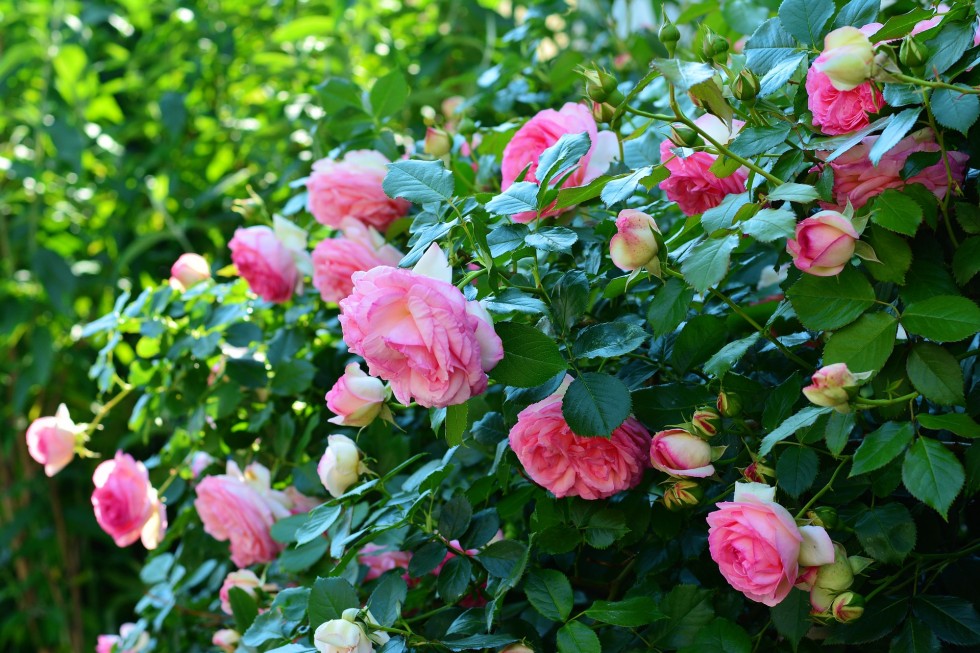Trimming rose bushes is absolutely necessary for their health and good appearance. Besides, it is an excellent idea to improve your garden.
At the same time, pruning roses often seems to be intimidating and confusing. The only way to cope with this problem is to clear out how, when and what exactly to trim.
According to professional gardeners, there are some factors influencing growth and bloom of rose bushes. Soil, proper watering, enough sunlight are among the obvious natural factors.
Although, a good pruning matters much as well. It is aimed at removing old or dead canes in order to redirect the energy, which is needed for a plant.
Proper bush pruning ensures that unnecessary branches don’t steal nutritional chemicals anymore, and all of them are used for blossoming rose bushes.
To make you garden clean, neat and to avoid pests pruning is also crucial. As it provides roses with sanitizing, it insures other plants from spreading of various diseases.
Due to it, you can also shape bushes creating a right good-looking form of plants.
As you can assure yourself of so many positive sides you (as well as your garden in general and every rose bush in particular) can benefit from proper pruning.
To make sure you do everything right, read our instructions below.
5 rose bushes pruning tips
-
Determine proper time
Timing is very essential part of the process, because only if you trim your bushes in appropriate season of the year, the rose will grow rampant and beautiful.
Actually, time of pruning substantially depends on the region you live. Generally, the best time is from the end of January in warm climate areas to the beginning of April in regions with cold climate.The main thing that will help you to decide is frost. Trimming would be effective if done after the last frosty winter days.
If you expect no frost until the next cold season, you can start. But if you are not sure, wait one or two weeks more. Another tip for you is emerging of buds starting to swell.
Furthermore, it may have sense to prune rose bushes in summer after blossoming. -
Prepare the tools
To cut off the branches you will need some garden tools. To do it effectively, be ready to use prune clippers (shears or loppers) and long-cuffed rubber gloves (it’s better to use thick ones in order to protect hands from thrones).
Don’t use dull scissors as they can harm stems. You should better buy high-quality shears. Don’t save money on them, they can serve you longer.So, before cutting, make sure the shears are clean and sharp enough to avoid tears and trim effectively.
Additionally, you may need an alcohol or bleach solution in order to carry out a proper disinfection. Submerge your shears into the solution before cutting. That will prevent from spread of plant pests.
After pruning you can also cover the canes with white glue. It is not vitally important, yet can help to avoid both insects invading and stem diseases. -
Apply correct technique
When decided when and with help of what you are going to trim rose bushes, it’s time to figure out how to do it properly.
Regardless different special trimming principles applying to particular kinds of roses, let’s focus on the most common rules fitting any type.You should cut each cane and branch at a 45-degree angle 1/4 inches above an outward facing leaf bud.
Every cane should be pruned as low as possible, closer to the base. HireRush.com also recommends you to ensure that the central part of the bush is open enough and free of useless sprouts. -
Decide what to prune?
Start from cutting dead or dying canes. You will recognize them by a dark color and “weak” appearance.
Then, remove all thinner than pencil branches as well as canes that cross each other. Doing it guarantees good air circulation.
Now, if there are some suckers near the bush, cut them off too by digging deeper and getting to their roots.One of the most important steps is deadheading. It is a removal of fade blossoms just above the highest leaf. Finally, remove remaining foliage.
Take a look at your rose at a distance and ensure you like the shape, make changes. -
Don’t bother to harm
Ignoring any of our tips may take place in a particular situation. That’s why you don’t need to worry about killing of damaging your rose bush.
It’s hard to describe every of you step precisely, by this, it’s no need to do it.
Bush trimming is, as you see, a pretty simple task. You can successfully accomplish it yourself and revitalize your garden at once.
Nevertheless, there are some difficulties you may face. For example, you can’t define when to prune as you’re hesitating on issues of climate and don’t know the time when to do it better.
Another problem may be connected with the type of roses you have. Mind that every particular sort of rose bush may require particular way, time and frequency of its pruning.
To ease your outdoor job you may rely on your local specialist.Leave your request here





